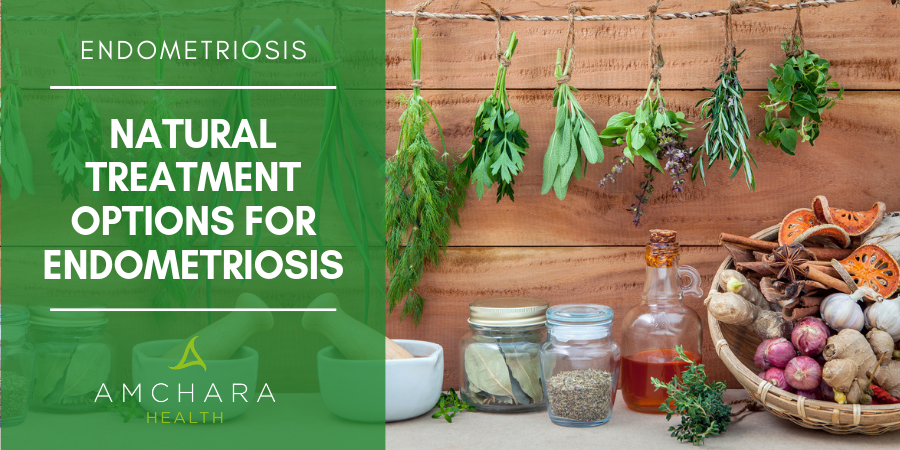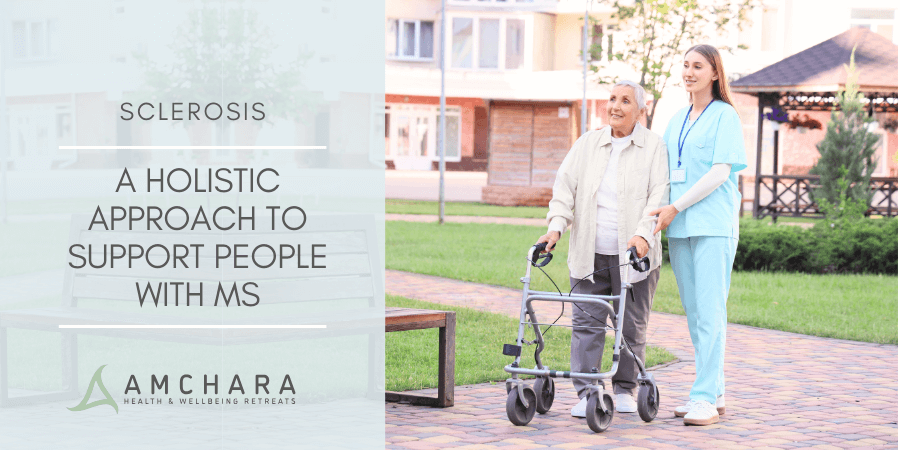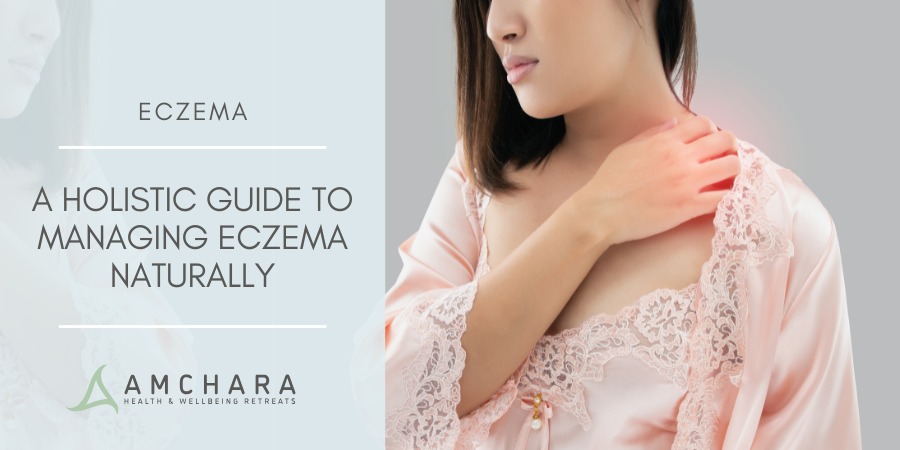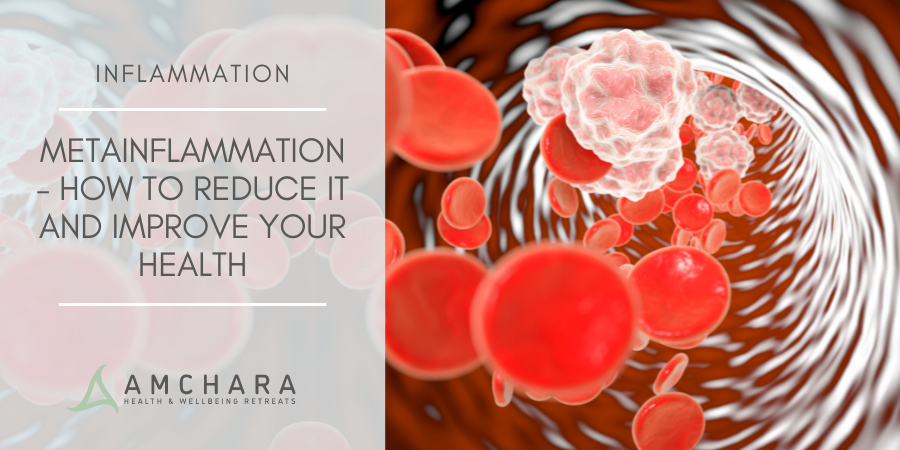Topics Covered in this article:
Endometriosis is a frequently overlooked condition.
New scientific advances are helping scientists to understand what may contribute to its development.
Our mission is to provide you with insightful information.
We always take an evidence-based approach and aim to provide you with actionable knowledge and tips to help you on your journey to optimal health and in this article, we will look at some natural ways to manage this distressing condition.
One of the major factors in the development of endometriosis revolves around the role of oestrogen.
This hormone is responsible for the thickening of the lining of the uterus to prepare for pregnancy.
In the case of endometriosis, fragments of uterine tissue become implanted onto organs outside of the uterus.
There they thicken and grow in response to the message of oestrogen, which rises and falls cyclically through the month.
Traditional treatments concentrate on either reducing the amount of oestrogen present or blocking its activity, along with surgically removing the endometrial lesions.
Scientists are now starting to realise oestrogen is not the only contributory factor linked to endometriosis.
New research is currently concentrating on discovering the role of the bacterial balance in the pelvis, as well as unravelling dysfunctions of the immune system which allow the endometrial tissue to grow in the first place.
Also, it’s now becoming increasingly understood that endometriosis seems to be closely linked to inflammation.
Reducing Inflammation
Because of the direct link between inflammation and endometriosis, any strategy which reduces inflammation can be useful.
Many dietary factors are linked to the level of inflammation in the body.
Foods which promote inflammation include:
- Red meat
- Dairy products from cows
- Gluten – this protein is found in wheat, rye, some oats and barley
- Processed foods
- Sugar
- Alcohol
Anti-inflammatory foods include:
- Oily fish such as wild caught salmon, mackerel and sardines, which contain anti-inflammatory omega-3 oils.
- Fresh unsalted seeds and nuts such as flax, chia seeds and pumpkin seeds and walnuts, which are also high in omega-3s. Use cold-pressed flaxseed oil as a salad dressing.
- Inflammation-fighting plant foods include green leafy vegetables, beetroot, celery, cruciferous vegetables, berries, pineapple and ginger. Many of these are delicious juice ingredients as part of a juice cleanse.
- Coconut oil, which is great for cooking, baking, or eaten off the spoon.
- Turmeric has been widely investigated for its anti-inflammatory properties. Researchers have found it helped endometriosis by reducing the growth of endometrial tissue (1).
One study found women who consumed good levels of green vegetables and fresh fruit had a significantly lower risk of developing endometriosis, while those who ate plenty of red meat had a higher risk (2). So it makes sense to ensure you’re focusing on the anti-inflammatory foods above.
Oestrogen Clearance
Since endometrial tissue is stimulated to grow by oestrogen, an overly high level of oestrogen in the body can cause endometriosis symptoms to be more severe.
Oestrogen is detoxified by the liver and excreted by the bowel, meaning both these organs are important for the regulation of oestrogen levels.
If the bowel is sluggish, there’s a danger oestrogen will be reabsorbed through the lining of the gut – especially if it’s more porous than it should be – thus adding to the total body load of oestrogen.
- Eat plenty of cruciferous vegetables such as cabbage, cauliflower, brussels sprouts and kale. They contain plant chemicals which can help liver detoxification.
- Fibre is of utmost importance in ensuring oestrogen is removed from the intestines effectively. Flax and chia seeds are excellent in this regard.
- Eat organic whenever possible, and switch to natural household cleaners and personal healthcare products, as many chemicals contain hormone-disrupting substances which can add to the body load of oestrogen.
Look After Your Microbiome
Endometriosis sufferers appear to have a significantly different population of bacteria residing in their pelvic cavity.
It’s thought this may originate from the bacteria in the gut which can migrate into the pelvis if the intestines are more permeable than they should be.
Alterations in the balance of bacteria which live symbiotically inside us can lead to inflammation as well as decreased oestrogen detoxification.
In fact, IBS and endometriosis are closely linked, and many women with endometriosis are told initially their symptoms are down to IBS alone.
Almost three quarters of women in one study experienced symptom relief of over 50% when they were given a low FODMAP eating plan.
This way of eating is low in certain types of fibre and aims to control the overgrowth of certain bacteria in the small intestine, where they don’t normally reside (3).
Given the above, it’s a good idea to include foods in your diet which can support a healthy microbiome.
These include fermented foods such as kefir, kombucha, kimchi and sauerkraut.
A probiotic supplement may also be helpful but it is advisable to check with a health practitioner first.
Look After Your Gut
It’s worth noting gluten and casein can increase the permeability of our intestines, which may mean bacteria are able to travel from the intestines to the pelvic cavity.
Casein is a protein in milk which exists in two forms, A1 and A2. Studies have shown A1 casein can cause gut inflammation.
A1 casein is found in dairy products from European cows. A2 casein is less inflammatory and it’s found in milk from Asian and African cattle and Jersey cows as well as dairy products from goats and sheep.
Research is ongoing in this area however it would be prudent to avoid gluten and A1 casein-containing dairy if you suffer from endometriosis.
Notable Nutrients to Manage Endometriosis
- Magnesium
Magnesium plays a role in the relaxation of muscles, including those of the uterus.
A deficiency can be related to menstrual cramping.
One study estimated over 82% of women are deficient in magnesium (4).
Foods naturally high in magnesium include pumpkin seeds, sunflower seeds, avocado, almonds, bananas, chard and spinach.
- B Vitamins
B complex vitamins play a role in the liver’s detoxification of oestrogen.
They have also been found to be connected to reduced levels of inflammation and to play a role in a healthy immune system.
Good sources of B vitamins include legumes, nuts, seeds and leafy green vegetables.
- Zinc
Zinc plays a major role in hormone balance, inflammation and the immune system.
This is because zinc is needed for the functioning of many enzymes in the body.
It also appears a high level of inflammation may actually lead to zinc deficiency.
One study found sufferers of endometriosis had lower blood levels of zinc compared to women who had not developed the condition (5).
Foods rich in zinc include pumpkin seeds, lentils, beans (particularly when they’re sprouted), nuts and dark chocolate.
However, if you are zinc-deficient, you may want to consider taking a supplement.
- Antioxidants
The mineral selenium is an antioxidant which plays an important role in the regulation of the immune system and inflammation.
It’s also needed for the production of progesterone, which helps keep oestrogen in check.
Selenium has been found to be deficient in sufferers of endometriosis.
One study gave the antioxidant vitamins C and E to women suffering from endometriosis and found their pain reduced in almost 45% of cases, accompanied by a significant decrease in inflammatory markers (6).
Selenium is particularly rich in brazil nuts, although the content of this mineral in plant foods varies widely depending on the selenium content of the soil they’re grown in.
Vitamin E is found in vegetable oils, nuts and seeds, avocado and some vegetables such as broccoli and spinach, and vitamin C is rich in colourful fruit and vegetables.
Supplements to Manage Endometriosis
- Resveratrol
This is a type of antioxidant known as a polyphenol, which has been found in studies to suppress the spread of endometrial lesions, encourage cell death in endometrial tissue, reduce inflammation and reduce the likelihood of adhesions (7).
- Pycnogenol
Pycnogenol is a compound of natural chemicals extracted from a type of pine tree.
One research study gave women who had been diagnosed with endometriosis 60mg pycnogenol per day and compared them with another group who were given a medicine which blocked the release of oestrogen.
The group who received the pycnogenol saw their symptoms reduce, while those who were treated with the oestrogen blocker saw their symptoms return after an initial improvement (8).
Any supplements are best taken in conjunction with a practitioner.
Natural Therapies to Manage Endometriosis Pain
- Acupuncture
One review of studies noted acupuncture resulted in a significant reduction in pain (9).
- Acupressure
Acupressure works on similar principals to acupuncture by concentrating on certain points on the body to promote balance and healing.
The pressure point known as SP6 is commonly used to alleviate pelvic pain.
This point is located on the inside of the leg just above the ankle.
To find it, apply pressure slightly behind the bone which is found four fingers’ width above the highest part of your ankle.
- Yoga
Although it hasn’t been studied specifically in connection with endometriosis, it’s been observed for many years yoga can help to manage pain. One study involved women with period pain.
They were asked to perform three different yoga poses – the cobra, the cat and the fish – during the second half of their cycle.
It was noted participants experienced a significant reduction in the duration and severity of their period pain after just two cycles (10).
- Exercise
Exercise can release endorphins, the body’s natural painkillers.
Although it may be the last thing you feel like doing when you are suffering the pain of endometriosis, exercise can be really beneficial because it can also increase blood flow and even reduce oestrogen levels.
When a person is in pain, they tend to be relatively immobile and muscles can tense and spasm, leading to more pain.
Pilates-style exercises for stretching the core muscles, hip flexors and pelvis can be useful.
If you can’t face exercising, even walking can be beneficial.
- Deep Breathing
When a pain strikes, we tend to take shallow rather than deep breaths.
Breathing deeply into the abdomen is the natural way of breathing but over the years we have lost this innate ability.
Taking a deep breath into your diaphragm allows the ribs to expand and results in less tension throughout the back, neck and even the pelvis.
Deep breathing can also calm the nervous system and reduce pain.
Focus on your breathing and breathe deeply and slowly so your abdomen expands and contracts like a balloon.
You can place your hands on your abdomen to feel it rising and falling.
Breathe in slowly and calmly to a count of four, hold your breath for a count of four and exhale to a count of four.
Then hold your breath for a further count of four before breathing in again.
This is known as foursquare breathing. Repeat ten times.
Other Measures to Manage Endometriosis
- Avoid Dioxins
Studies have shown dioxin exposure may play a role in the development of endometriosis (11).
Dioxins are industrial pollutants which degrade very slowly and accumulate in the food chain.
Our body tends to store them away in our fat cells. It’s known dioxins can affect hormone balance, possibly because they adversely affect the breakdown of oestrogen.
It’s also thought they can cause cells to become resistant to the message of progesterone.
Because dioxins accumulate in fat, they are often present in animal fats.
So it makes sense to limit your intake of non-organic red meats and dairy products.
Organic meat and dairy do still contain dioxins, although at a lower level.
Dioxins are also present in oily fish, especially from polluted seas, meaning fish from cleaner waters like wild-caught Alaskan salmon, Pacific wild-caught sardines and Albacore tuna from the US or British Colombia tend to be lower in dioxins.
The higher up the food chain a fish is, the more dioxins have the opportunity to accumulate, and levels vary between species.
For example, dioxins have been found to be generally high in herring and lower in trout.
Unfortunately, some researchers believe the majority of damage from dioxins occurs when we are still in our mother’s uterus.
Although we can’t do a great deal about our inherited body burden of pollutants, we can periodically undertake a juice cleanse (also called a juice fast) or engage in regular massage, such as lymphatic drainage massage, all of which help the body expel stored toxins.
Consider a liver cleanse which includes liver and colon-supporting herbs and supplements.
- Sanitary Products
Many sanitary products contain traces of pesticides, plastics, bleach or even dioxins.
Switch to organic cotton sanitary products or try a menstrual cup, which as it’s reusable is also better for the environment.
- Massage
We’ve already mentioned the benefits of lymphatic drainage massage to assist detoxification of unwanted substances such as pollutants and hormones.
A technique known as Mizan Womb Massage involves gently manipulating the abdomen to improve blood and lymph flow, relieve congestion and remove blockages.
It’s based on Eastern Massage techniques.
This type of massage is said to help restore balance and alignment, as well as strengthen the muscles and ligaments which hold the internal organs such as the uterus in its correct position.
Emotions, surgery, injury, poor posture or even constipation can lead to a tightening of muscles and fascia which can pull the uterus out of its optimum position.
It’s been used with success in cases of endometriosis.
Charting Your Cycle
It can be helpful to record how your symptoms change over the course of the months.
There are apps available to help you do this, or you may prefer to rely on pen and paper.
Whichever way you choose, be as detailed a you can.
Note down your emotions, your energy levels, pain, menstrual flow – anything you may feel changes for you over the course of a month.
After you’ve done this for a few months, you may start to see what your body is trying to tell you and what might be impacting your symptoms.
Conclusion
Endometriosis is a complex condition, and it’s likely it has a multitude of contributory factors which may be different for each woman.
It follows a whole body approach will be needed in order to begin to put things right.
Adopting the approaches described above may help to manage your symptoms, however, a consultation with an Amchara practitioner can look at your genetic picture, detoxification processes and hormone levels to help determine what is occurring in your body, with a view to restoring your natural health and balance.
We’re dedicated to providing you with both insightful information and evidence-based content, all orientated towards the Personalised Health approach.
Did you find this article useful?
We would love to know your thoughts. With your comments let’s continue the conversation.
Let us know what has helped you on your endometriosis journey.
By Cathy Robinson BScDipNutMed
READ THIS NEXT:




